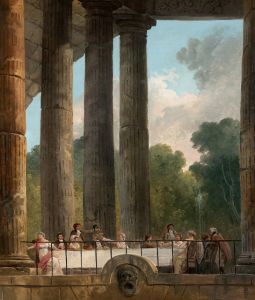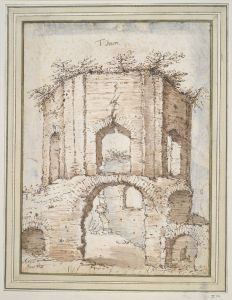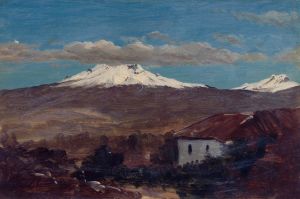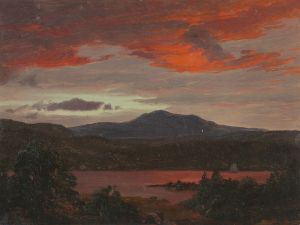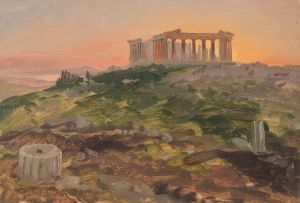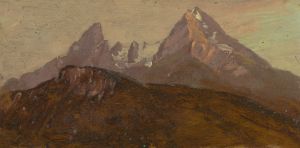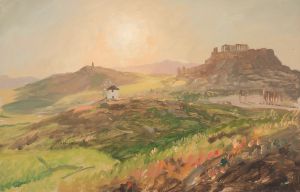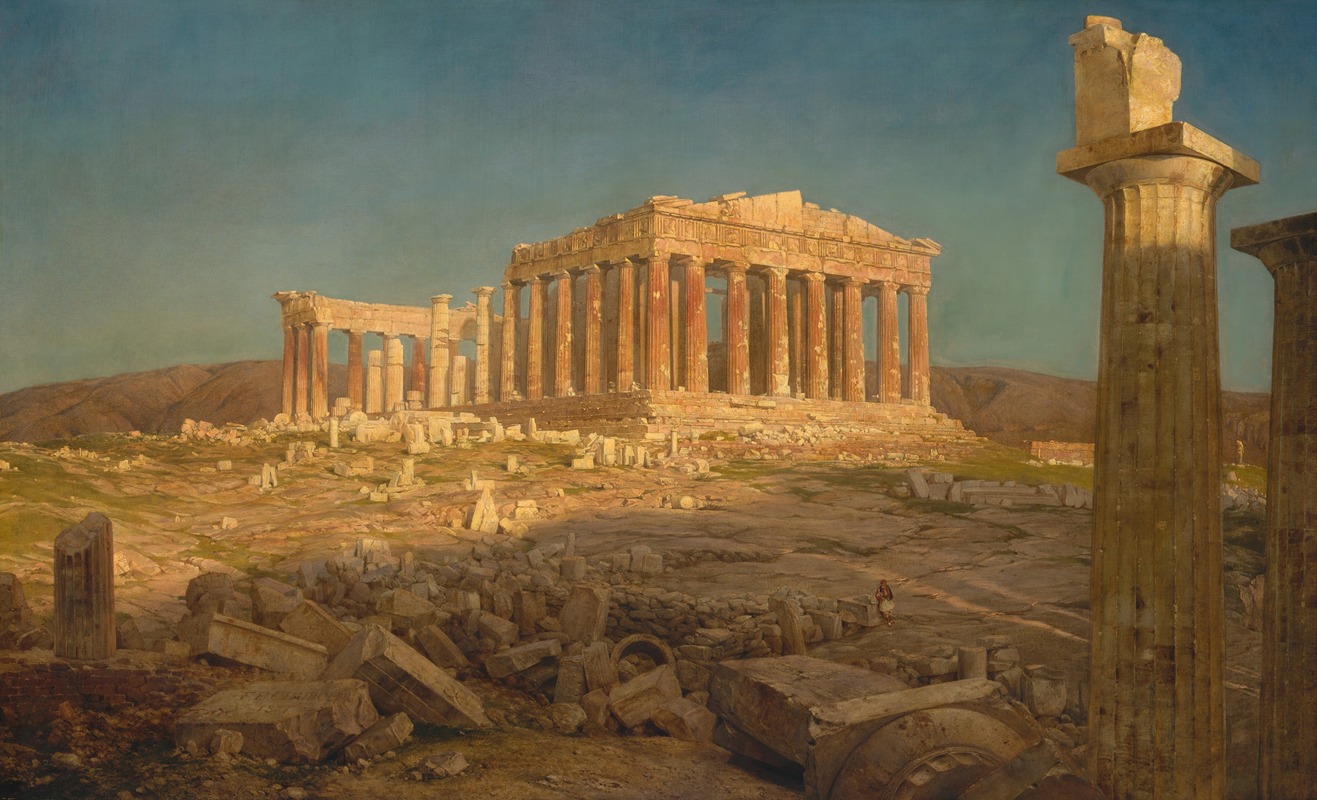
The Parthenon
A hand-painted replica of Frederic Edwin Church’s masterpiece The Parthenon, meticulously crafted by professional artists to capture the true essence of the original. Each piece is created with museum-quality canvas and rare mineral pigments, carefully painted by experienced artists with delicate brushstrokes and rich, layered colors to perfectly recreate the texture of the original artwork. Unlike machine-printed reproductions, this hand-painted version brings the painting to life, infused with the artist’s emotions and skill in every stroke. Whether for personal collection or home decoration, it instantly elevates the artistic atmosphere of any space.
"The Parthenon" is a painting by the American landscape artist Frederic Edwin Church, completed in 1871. Church was a central figure in the Hudson River School of American landscape painters, known for their romantic portrayal of the American wilderness. However, Church's interests were not confined to the landscapes of North America; he was also deeply inspired by the ancient and classical sites of Europe and the Middle East.
The painting depicts the Parthenon, the iconic temple on the Athenian Acropolis in Greece, which is one of the most significant cultural monuments of ancient Greece. The Parthenon was dedicated to the goddess Athena, whom the people of Athens considered their patroness. Constructed in the 5th century BCE during the height of the Athenian empire, the Parthenon is a symbol of the artistic and architectural achievements of ancient Greece.
Church's interest in the Parthenon was likely influenced by his travels and the broader 19th-century American fascination with classical antiquity. In 1869, Church traveled to Europe and the Middle East, a journey that included a visit to Athens. This trip provided him with the firsthand experience and sketches that would later inform his work on "The Parthenon."
The painting captures the Parthenon in a state of partial ruin, reflecting its condition in the 19th century after centuries of wear, natural disasters, and human conflict. Church's depiction is noted for its meticulous attention to detail and the dramatic use of light and shadow, which are characteristic of his style. The composition is dominated by the temple itself, set against a backdrop of a vivid sky, which enhances the monument's grandeur and timelessness.
"The Parthenon" is celebrated for its combination of historical accuracy and artistic imagination. Church's rendering of the ancient structure is both a faithful representation and an idealized vision, capturing the spirit of the classical world while also reflecting the romantic sensibilities of the 19th century. The painting is a testament to Church's skill in conveying the majesty and enduring significance of historical landmarks.
Today, "The Parthenon" by Frederic Edwin Church is housed in the collection of The Metropolitan Museum of Art in New York City. It remains an important work within Church's oeuvre and a significant example of 19th-century American landscape painting. The painting continues to be appreciated for its artistic merit and its reflection of the cultural and historical interests of its time.





![Colossus in front of Temple of Wady Saboua [Wadi al-Sabua], Nubia.](/imgs/217471/s/david-roberts-colossus-in-front-of-temple-of-wady-saboua-wadi-alsabua-nubia-503a97c9.jpg)
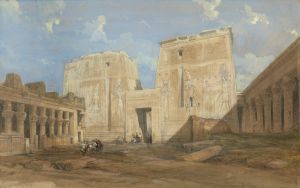
![Temple of Dandour [Dendûr], Nubia.](/imgs/217545/s/david-roberts-temple-of-dandour-dendur-nubia-8921547f.jpg)
